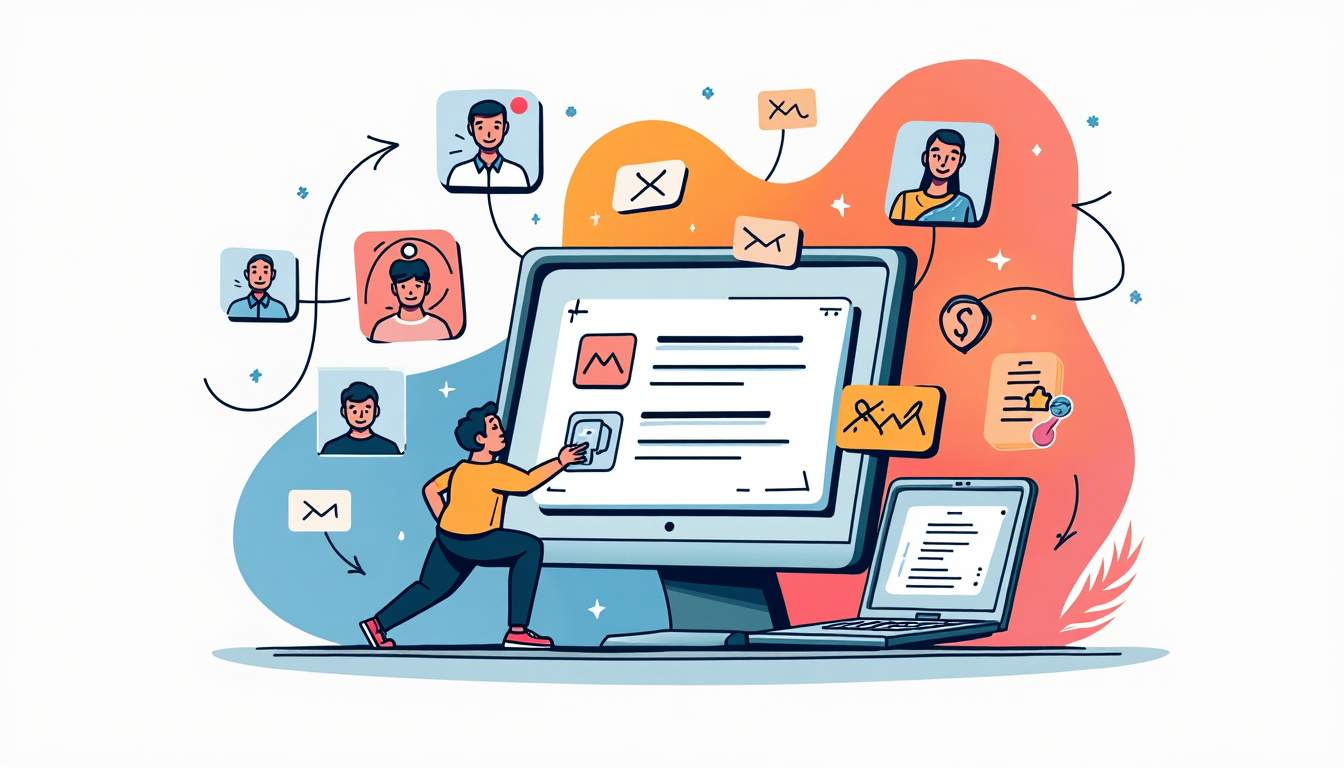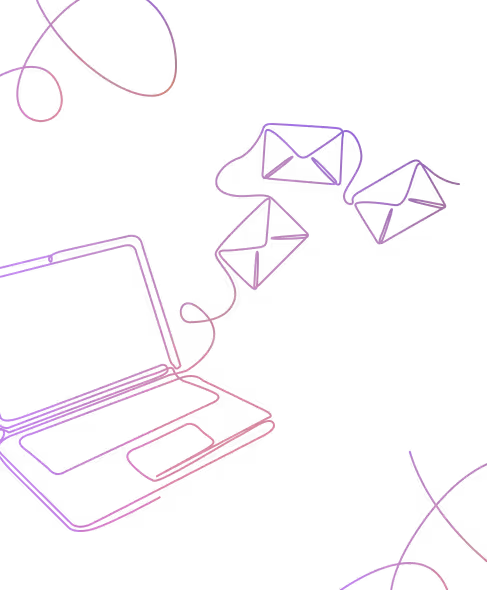In today's hypercompetitive digital landscape, launching a product is just the beginning. The real challenge lies in creating something users return to repeatedly—something they integrate so deeply into their workflows that switching becomes unthinkable. This is product stickiness, and it's the difference between apps that dominate markets and those that disappear into obscurity.
Consider this: the average smartphone has 80+ apps installed, but users regularly engage with only 9 of them daily. What makes those 9 apps indispensable while others gather digital dust? The answer lies in their stickiness—their ability to embed themselves into users' habits, solve critical problems, and create switching costs that make alternatives seem inferior or inconvenient.
For companies investing in product development and launch services, understanding and implementing product stickiness strategies isn't optional—it's essential for survival. This comprehensive guide explores how to build products that users can't imagine living without.
What Is Product Stickiness?
Product stickiness refers to the ability of a product to keep users engaged and returning over time. It’s what transforms a first-time user into a loyal advocate. Sticky products don’t just provide value—they create habits, accumulate data, and grow more essential with every use.
The Anatomy of Product Stickiness
Sticky products share several defining traits that make them hard to abandon.
Habitual Integration
Sticky products become part of users’ routines. Checking Instagram in the morning or using Slack at work are no longer choices—they’re habits triggered by daily workflows and contexts.
Value Accumulation Over Time
The longer users engage, the more value they unlock. Spotify learns preferences to deliver hyper-personalized playlists. Notion evolves into a unique knowledge hub. This compounding value makes switching costly.
Network Effects
Products gain exponential value as more people use them. LinkedIn thrives on network density, while Figma is indispensable when entire teams collaborate. More users = more stickiness.
Switching Costs and Data Lock-In
Users build data, history, and workflows that can’t easily be replicated elsewhere. QuickBooks holds years of financial records, Lightroom stores thousands of edits, and Apple Health accumulates years of personal progress. These investments create powerful retention.

Measuring Product Stickiness: Metrics That Matter
To know whether your product is sticky, track metrics that reveal real engagement.
DAU/MAU Ratio
A daily-to-monthly active user ratio above 20% signals strong engagement; above 50% signals exceptional stickiness.
Retention Curves
Sticky products show retention curves that flatten instead of declining, proving a core group of loyal users stays engaged.
Session Frequency and Duration
How often users open your app—and how long they stay—indicates habit strength and depth of engagement.
Feature Adoption Rates
When users adopt multiple features over time, it shows they’re finding diverse value and relying on the product more deeply.
Customer Lifetime Value (CLV)
The stickier the product, the higher the CLV as users stay longer, expand usage, and increase spending.
Product Stickiness Across Industries
Stickiness takes different forms depending on the sector. Here’s how industries achieve it:
Web & Mobile Apps: Building Digital Habits
Digital apps thrive on frequent interactions and personalization.
- Personalization engines like TikTok’s “For You” page quickly tailor content to each user.
- Dopamine loops (Duolingo streaks, Bumble swipes) keep users hooked.
- Cross-platform syncing (Obsidian, Bear) ensures availability everywhere.
- Integrations (Zapier) turn apps into workflow hubs, increasing reliance.
SaaS & Enterprise: Operational Dependence
Enterprise software becomes sticky by embedding itself into daily operations.
- Workflow embedding (Salesforce, HubSpot) defines how departments operate.
- Collaborative features (Miro, Mural) preserve collective knowledge.
- Customization (Jira, Salesforce apps) creates unique configurations too costly to abandon.
E-commerce & Marketplaces: Trust and Convenience
Marketplaces keep users by reducing friction and creating commitment.
- Personalized recommendations leverage purchase history (Amazon).
- Loyalty programs like Prime lock in buyers through sunk-cost commitment.
- Two-sided stickiness anchors both sellers and buyers (Etsy, eBay).
FinTech: Deep Financial Integration
Financial tools are sticky because money management is central and hard to duplicate.
- Aggregated dashboards (Mint) unify multiple accounts.
- Automated workflows (bill payments, investments) create dependency.
- Historical data (Robinhood, Coinbase) adds compliance-related lock-in.
Health & Wellness: Long-Term Data and Community
Wellness apps retain users by tracking progress and building social motivation.
- Health history (MyFitnessPal, Apple Health) makes switching painful.
- Device ecosystems (Fitbit, Whoop) combine hardware and software.
- Social accountability (Strava) fosters community and competition.
How to Build Product Stickiness: A Strategic Framework
Achieving stickiness is deliberate. Here are six pillars to design around:
1. Solve a Recurring Problem Exceptionally Well
Sticky products solve frequent, high-value problems better than alternatives. Password managers like 1Password become indispensable because users need them multiple times a day.
2. Design for Habit Formation
Habits form when products use triggers, low friction, and variable rewards. Headspace reminders build meditation habits, while one-click checkout reduces barriers to engagement.
3. Build Progressive Value Over Time
Products should get better the more they’re used. Spotify’s recommendations, LinkedIn’s skill endorsements, and Notion’s knowledge libraries all compound in value.
4. Create Network Effects and Communities
Encourage user-to-user interactions and community-building. Whether it’s Slack, Uber, or Discord, network effects amplify stickiness.
5. Implement Switching Costs Thoughtfully
Switching costs should stem from genuine value creation. Deep integrations, data accumulation, and subscription models all make staying easier than leaving.
6. Deliver Consistent Innovation
Sticky products don’t stagnate. They continuously evolve, expanding features (Notion, Shopify) and responding to user feedback. Here, fast iteration cycles are critical—a practice Wednesday Solutions emphasizes through our sprint-based approach. By running rapid, focused sprints, teams can test ideas quickly, refine them based on real user feedback, and continuously deliver improvements that reinforce product stickiness.
Common Pitfalls That Break Stickiness
Knowing what destroys stickiness is just as important:
- Performance issues quickly drive users away.
- Feature bloat dilutes the core value proposition.
- Aggressive monetization erodes trust and loyalty.
- Ignoring platform shifts risks irrelevance (e.g., BlackBerry Messenger).
- Privacy violations instantly break user trust.

Implementation Strategies for Product Teams
Turning stickiness into reality requires alignment across the product lifecycle.
During Development
- Map user journeys to identify friction points.
- Build analytics to track behaviors and sequences.
- Implement A/B testing frameworks for optimization.
Post-Launch
- Use cohort analysis to understand long-term retention.
- Track feature adoption funnels for insights.
- Run win-back campaigns while addressing root causes of churn.
Cross-Functional Alignment
- Product + Marketing: Ensure messages align with actual value.
- Customer Success: Surface user pain points that hinder stickiness.
- Engineering: Maintain performance standards that support habit formation.
The Future of Product Stickiness
Emerging technologies are reshaping how stickiness is built:
- AI-powered personalization will anticipate user needs before they’re expressed.
- Cross-reality experiences will bridge digital and physical workflows.
- Blockchain ownership will create new economic switching costs.
- Ambient computing will integrate products seamlessly into everyday contexts.
Building Products That Last
Product stickiness isn’t about trapping users—it’s about creating value that compounds over time. The most successful products don’t just solve problems; they become essential companions in users’ lives and workflows.
For companies investing in launch services, prioritizing stickiness from conception through development isn’t just about better metrics—it’s about building products that matter. Sticky products generate loyalty, predictable revenue, and lasting market positions that withstand competition.
At Wednesday Solutions, we specialize in developing and launching digital products that users love and keep coming back to. Our approach combines behavioral design, technical excellence, sprint-driven iteration, and proven stickiness strategies to ensure your product doesn’t just launch successfully—it thrives.
Ready to build products with exceptional stickiness? Explore our product launch services to learn how we can help you create products that stick.






